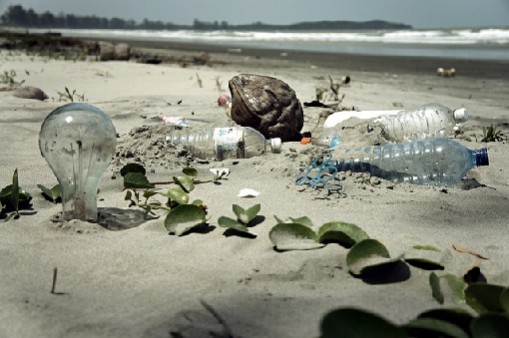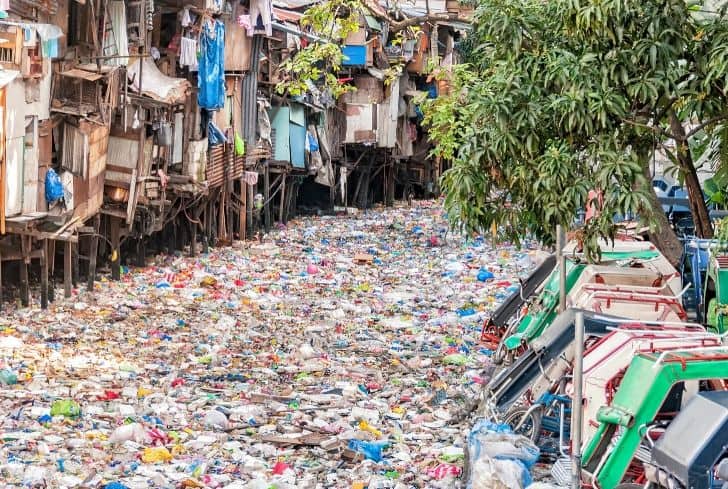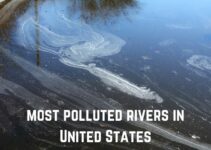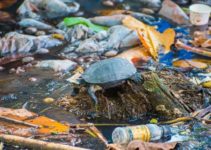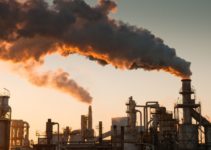The water they say is life, and indeed they were right. About 70% of the earth is water, which has undeniably become one of our greatest resources. When we were young, we learned about the various ways to conserve water because water is used in almost every important human chores and processes. Water is an essential element in both domestic as well as industrial purposes.
However, a closer inspection of our water resources today gives us a terrible shock. Water is now infested with various wastes ranging from floating plastic bags to chemical waste, converting our water bodies into a pool of poison.
Water and air, the two essential fluids on which all life depends, have become global garbage cans.
~ Jacques Yves Cousteau
In simple words, the contamination of water bodies is water pollution. It is the abuse of lakes, ponds, oceans, rivers, reservoirs,
etc. Pollution of water usually occurs when substances discharged in it negatively modify the water. This discharge of pollutants can be direct as well as indirect.
Water pollution is an appalling problem, powerful enough to lead the world on a path of destruction. Water is a natural solvent, enabling most pollutants to dissolve in it easily and contaminate it.
The effect of water pollution is directly suffered by the organisms and vegetation that survive in water, including amphibians. On a human level, several people die each day due to the consumption of polluted and infected water.
As per the Economist report (dated 2008), each day, over 1000 children die of diarrheal sickness in India, and the numbers have been alarming in the last five years.
Water is polluted by both natural as well as human-made activities. Volcanic eruptions, earthquakes, tsunamis, etc. are known to alter water and contaminate it, also affecting the ecosystems that exist underwater.
Various Sources of Water Pollution
There are various classifications of water pollution, which are discussed as follows.
Groundwater Pollution
Groundwater is one of our least visible but most critical natural resources. With rainfall, it becomes groundwater as it seeps deep into the earth, filling up cracks, crevices, and porous spaces of an aquifer, which is an underground storehouse of water. Groundwater is then pumped to the earth’s surface for drinking water.
Groundwater gets polluted when contaminants such as fertilizers, pesticides, and waste leaching from landfills and septic systems, making their way into an aquifer.
Once polluted, an aquifer becomes unsafe for humans and remains unusable for decades, or even thousands of years. Besides, groundwater can also spread contamination far from the original polluting source when it seeps into streams, lakes, and oceans.
Making groundwater free of contaminants can be difficult to impossible, as well as costly.
Surface Water
Surface water covers about 70 percent of the earth, filling our oceans, lakes, rivers, and including all blue bits on the world map. Surface water from freshwater sources other than the sea accounts for more than 60 percent of the water delivered to our homes.
As per the Environmental Protection Agency of the U.S., nearly 50% of our rivers and streams and over one-third of our lakes are polluted and unfit for swimming, fishing, and drinking.
Nutrient pollution that includes nitrates and phosphates, which plants and animals need to grow, causes major pollution in the freshwater sources due to farm waste and fertilizer runoff. Municipal and industrial waste discharges and also individuals’ dumping directly into waterways contribute their fair share of toxins.
Ocean Water
Eighty percent of ocean pollution or marine pollution originates on land along the coast or far inland. Streams and rivers carry contaminants such as chemicals, nutrients, and heavy metals that are carried from farms, factories, and cities into our bays and estuaries, and from there, they reach the ocean.
Marine debris, particularly plastic, is blown away by the wind or washed away in storm via drains and sewers. Our seas sometimes get polluted by big and small oil spills and leaks and are also soaking up carbon pollution from the air. The ocean absorbs a quarter of human-made carbon emissions.
Point Source
When contamination occurs from a single source, it’s called point source pollution. Though this pollution originates from a specific place, it can affect miles of waterways and ocean.
Point sources include wastewater, which is known as effluent, legally or illegally discharged from a manufacturing unit, oil refinery, or wastewater treatment facility.
It can be from leaking septic systems, chemical and oil spills, and also illegal dumping. The EPA has set limits on what can be discharged by a facility directly into a body of water to regulate point source pollution.
Nonpoint Source
Nonpoint source pollution is contamination derived from multiple or diffused sources. These may include contaminated water traveled after rains, agricultural or stormwater runoff, or debris blown into waterways from the land.
Nonpoint source pollution is considered as the leading cause of water pollution, but it’s challenging to regulate since there’s no identifiable source to blame.
Transboundary
A boundary line cannot contain water pollution on a map. Transboundary pollution happened when contaminated water from one country spilled into other countries’ waters. It can result from a disaster like an oil spill or the slow, downriver creep of industrial, agricultural, or municipal discharge.
Various Causes of Water Pollution
1. Industrial Waste
Industries produce a tremendous amount of waste, which contains toxic chemicals and pollutants, causing air pollution and damage to our environment and us. They contain harmful chemicals, including lead, mercury, sulfur, nitrates, asbestos, and many others.
Many industries, not having a proper waste management system, drain the waste in the freshwater, which goes into canals, rivers, and later into the sea.
The toxic chemicals may change the color of water, increase the number of minerals, called eutrophication, change the temperature of the water, and pose a severe hazard to water organisms.
2. Sewage and Wastewater
The sewage and wastewater that is produced in each household are treated chemically and released into the sea along with fresh water. The sewage water carries pathogens, a typical water pollutant, other harmful bacterias, and chemicals that can cause serious health problems and thereby diseases.
Microorganisms in water are known to cause some of the very deadly diseases and become the breeding grounds for creatures that act as carriers. These carriers inflict these diseases onto an individual via various forms of contact. A typical example would be Malaria.
3. Mining Activities
Mining is the process of crushing the rock and extracting coal and other minerals from the underground. These elements, when extracted in the raw form, contain harmful chemicals and can increase the number of toxic elements when mixed up with water, which may result in health problems. Mining activities emit a large amount of metal waste and sulfides from the rocks, which is harmful to the water.
4. Marine Dumping
The garbage produced by households in the form of paper, plastic, food, aluminum, rubber, glass, is collected and dumped into the sea in some countries. These items take 2 weeks to 200 years to decompose.
When such things enter the sea, they not only cause water pollution but also harm animals in the sea.
5. Accidental Oil Leakage
Oil spill poses a huge threat to marine life when a large amount of oil spills into the sea and does not dissolve in water. It causes problems for local marine wildlife, including fish, birds, and sea otters.
A ship carrying a large quantity of oil may spill oil if met with an accident. Such an oil spill can cause varying damage to species in the ocean, depending on the amount of oil spill, the toxicity of pollutants, and the size of the ocean.
6. The burning of fossil fuels
Fossil fuels like coal and oil, when burnt, produce a substantial amount of ash in the atmosphere. The particles which contain toxic chemicals when mixed with water vapor result in acid rain. Also, carbon dioxide is released from the burning of fossil fuels, which results in global warming.
7. Chemical fertilizers and pesticides
Chemical fertilizers and pesticides are used by farmers to protect crops from insects and bacterias. They are useful for the plant’s growth. However, when these chemicals are mixed up with water, they produce harmful pollutants for plants and animals.
Also, when it rains, the chemicals mix up with rainwater and flow down into rivers and canals, which pose serious damages for aquatic animals.
8. Leakage From Sewer Lines
A small leakage from the sewer lines can contaminate the underground water and make it unfit for the people to drink. Also, when not repaired on time, the leaking water can come on to the surface and become a breeding ground for insects and mosquitoes.
9. Global Warming
An increase in the earth’s temperature results in global warming due to the greenhouse effect. It increases the water temperature and results in the death of aquatic animals and marine species, which later results in water pollution.
10. Radioactive Waste
Nuclear energy is produced using nuclear fission or fusion. The element that is used in the production of nuclear energy is Uranium, which is a highly toxic chemical.
The nuclear waste that is produced by radioactive material needs to be disposed of to prevent any nuclear accident. Nuclear waste can have serious environmental hazards if not disposed of properly. Few major accidents have already taken place in Russia and Japan.
11. Urban Development
As the population has grown exponentially, so has the demand for housing, food, and cloth. As more cities and towns are developed, they have resulted in increasing use of fertilizers to produce more food, soil erosion due to deforestation, rise in construction activities, inadequate sewer collection and treatment, landfills as more garbage is produced, increase in chemicals from industries to produce more materials.
12. Leakage From the Landfills
Landfills are nothing but a massive pile of garbage that produces the awful smell and can be seen across the city. When it rains, the landfills may leak, and the leaking landfills can pollute the underground water with a large variety of contaminants.
13. Animal Waste
The waste produced by animals washed away into the rivers when it rains. It then gets mixed up with other harmful chemicals and causes various water-borne diseases like cholera, diarrhea, dysentery, jaundice, and typhoid.
14. Underground Storage Leakage
Transportation of coal and other petroleum products through underground pipes is well known. Accidental leakage may happen anytime and may cause damage to the environment and result in soil erosion.
15. Eutrophication
The increased level of nutrients in water bodies is known as Eutrophication. It results in the bloom of algae in the water. It also depletes the amount of oxygen in the water that negatively affects fish and other aquatic animal populations.
16. Acid Rain
Acid rain is essentially water pollution caused by air pollution. When the acidic particles released in the atmosphere by air pollution mix with water vapor, it results in acid rain.
Why Does Water Need to be Preserved and How?
Water pollutants include both organic and inorganic factors. Organic factors include volatile organic compounds, fuels, waste from trees, plants, etc. Inorganic factors include ammonia, chemical waste from factories, discarded cosmetics, etc.
The water that travels via fields is usually contaminated with all forms of garbage inclusive of fertilizers that it swept along the way. This infected water makes its way to our water bodies and sometimes to the seas endangering the flora, fauna, and humans that use it along its path.
The current scenario has led to rapid consciousness about water preservation, and efforts are being made on several levels to redeem our water resources.
Industries and factory set-ups are restricted from contaminating the water bodies and are advised to treat their contaminated waste through filtration methods.
People are nowadays investing in rainwater harvesting projects to collect rainwater and preserve it in wells below ground level.
Water pollution is prevalent and is an area of high alert. Water needs to be preserved and valued today for us to live tomorrow.
Treatment of Polluted Water
The treatment of polluted water removes existing contaminants or reduce the concentration of the pollutants to make the water fit for the desired use. Some of the ways to do it are:
Industrial Treatment
The raw sewage needs to be adequately treated in a water treatment plant before it is released into the environment. Water is passed through several chambers and chemical processes in the water treatment plant to reduce the amount and toxicity of waste.
Denitrification
When nitrates present in the water get converted into gas, it is known as denitrification. It is an ecological approach that prevents leaching of nitrates in the soil. It stops groundwater from getting contaminated.
Ozone Waste Water Treatment
The ozone wastewater treatment method has become very popular. In this method, an ozone generator breaks down the pollutants in water. Ozone oxidizes bacteria, organic material, molds, and other contaminants in water.
Septic Tanks
Septic tanks treat sewage right at the place of the location where it originates instead of treating it in any far-away plant or sewage system. This system is usually put to use at the individual building level. The sewage gets separated into solid and liquid components and treated separately.
References:
